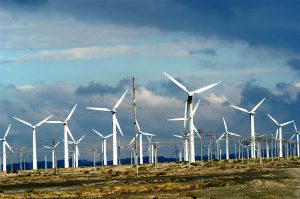On July 14, China’s National Energy Administration published updated guidance for how buyers and sellers of China’s Green Electricity Certificates (GECs) can issue and trade this financial instrument. The change makes the accounting process for GECs more transparent and is crucial to making the marketplace for GECs more robust as China works to increase renewable energy consumption nationwide.
GECs are electronic certificates that represent 1,000 kilowatt-hours of renewable electricity. Since 2017 when China first began issuing GECs, renewable energy generators have sold these certificates to subsidize their revenues from selling electricity. In China, GECs are the only way to prove that electricity comes from a renewable source, so demand comes from consumers who want to demonstrate their efforts to decarbonize as well as consumers who need to purchase renewable energy to satisfy legal requirements.
The July policy update requires organizations participating in the GEC marketplace to disclose their identity and transaction history, improves the quality of renewable electricity generation and consumption data, and manages that data more carefully.
This comes as the latest in a procession of updates to the GEC policy framework that began just under a year ago. In August 2023, the NEA published new guidelines for GECs in conjunction with the National Development and Reform Commission and the Ministry of Finance. That August 2023 change was by far the most significant, increasing the scope of renewable energy generators eligible to issue GECs and establishing GECs as the only way to certify renewable production in China, among other changes.
Since then, GECs have come to occupy an increasingly central role in China’s energy transition, a development I have covered previously. The result is that as China makes progress on its climate goals and enforces an ever-stricter emissions control regime, GECs are poised to play an indispensable role as the accounting method of choice.
Perhaps the most important function that GECs fulfill in China’s energy transition is increasingly the stubbornly low renewable energy consumption levels.
Since the start of the decade, Chinese renewable energy installation has exploded. In 2020, Chinese President Xi Jinping pledged to peak carbon dioxide emissions by 2030 and reach net neutrality by 2060. He also pledged to install an eye-watering 1,200 GW of wind and solar capacity by 2030, from a starting point of 400 GW in 2020.
Today, China is on the cusp of achieving that goal six years early. At just over 1,150 GW of wind and solar capacity, China will likely cross the 1,200 GW mark before the end of 2024, representing an enormous success in China’s domestic decarbonization efforts, as well as in the global drive to transition away from fossil fuels.
The fly in the ointment is that while renewable energy capacity has exploded, renewable electricity consumption has remained stubbornly low and coal-fired generation has continued to increase. According to Caixin, during 2023, renewable energy consumption did not follow increases in renewable energy capacity, and coal-fired power generation increased by 4.6 percent over the same period.
Between the start of 2020 and the end of 2023, while the share of wind and solar as a component of total national generation capacity increased dramatically from just above 20 percent to over 33 percent, actual electricity generation from wind and solar as a share of total generation increased more modestly, from roughly 10 percent to 17 percent.
The problem is especially pronounced in western provinces, where the buildout of large-scale renewable energy projects has been heavily emphasized by central planners. Caixin reported that as of the end of 2023, 43 percent of power generation capacity in Xinjiang was taken up by wind and solar, but electricity generated by those sources represented only 16.4 percent of the total. Coal still maintains a dominant role in Xinjiang’s power sector. Coal-fired power accounts for 46.9 percent of total generation capacity in the province, but more than 75 percent of actual electricity generation.
This imbalance is due in part to unalterable features of renewable energy. In contrast to fossil fuel energy sources, which can produce electricity whenever it is needed, renewable energy sources can only produce electricity when conditions are right, such as adequate sunshine or wind speed. Though installing more storage capacity like batteries can reduce the impact of intermittency, solar generators will always be dependent on the sun.
Another factor behind the low consumption rates is the structure of China’s power sector. Like many countries, China has not yet fully implemented a market for electricity. Between 2020 and 2023, the percentage of renewable electricity in China that was sold on the market, rather than in non-competitive transactions, increased from 24 percent to 47 percent. This represents progress, but still shows that there is a long way to go.
This is important because one of the advantages that renewable electricity has over fossil fuels is cost. The logic is that as more of China’s electricity is sold on the market, the share of renewable electricity will rise because of that price competitiveness. This is where GECs come in.
As the only way to certify production and consumption of renewable electricity, GECs are central to ensuring the legitimacy of China’s efforts to increase renewable energy consumption, move toward a market-oriented power sector, and decarbonize. The July policy update is part of that process. As China smashes through its targets for renewable energy capacity, GECs are poised to play a key role in all efforts to increase renewable energy consumption.

































